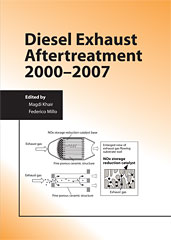Technical Paper
An Integrated Methodology for 0D Map-Based Powertrain Modelling Applied to a 48 V Mild-Hybrid Diesel Passenger Car
2018-09-10
2018-01-1659
Nowadays, the 48 V vehicle architecture seems to be the perfect bridge between the 12 V system and the costly High Voltage (HV) electrification towards the crucial goal of CO2 and pollutants emissions reduction in combination with enhanced performance. However, this approach leads to an increased complexity in the interaction between different sub-systems targeting the optimization of the Energy Management System (EMS). Therefore, it becomes essential to perform a preliminary hardware assessment, exploring the interactions between the different components and quantifying the cost vs benefit trade-off. To this purpose, an integrated experimental/numerical methodology has been adopted: a comprehensive map-based Hybrid Electric Vehicle (HEV) model has been built, allowing the simulation of a variety of hybrid architectures, including both HV and 48 V systems.

